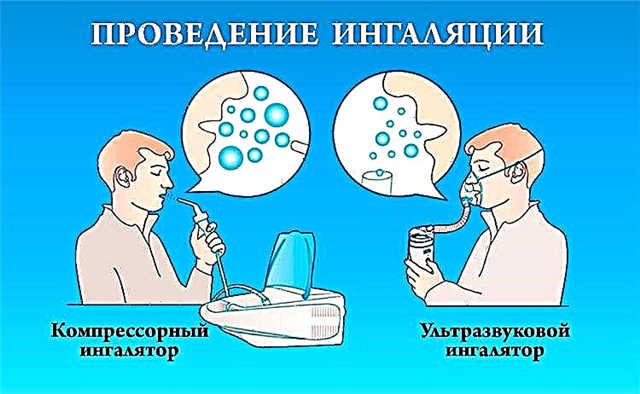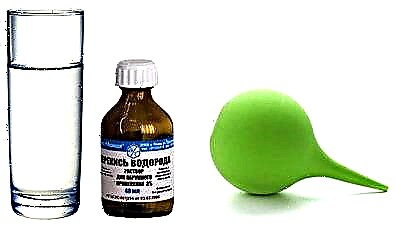Irrigating your sinuses with salt water for a cold can help relieve congestion. Our ancestors knew how to properly rinse the nose with sea salt, not only for colds, but also for their prevention. It was noticed long ago that people living by the sea get sick much less often and tolerate inflammation of the upper respiratory tract much more easily. And what about those who often catch colds, but live far from the sea? The answer is simple: use sea salt to treat colds.
How is sea salt useful?
The benefits of this miracle cure have been known for thousands of years. Its beneficial properties were discovered by ancient healers. Since then, humanity has learned to use this product for medicinal purposes. No wonder yogis and Muslims daily irrigate their nose with a solution of sea salt. Attempts have been made to replace it with plain edible salt. But why it did not work, it became known from the moment of the discovery of the chemical composition of sea salt, which cannot be compared with the composition of table salt.
Advantages
- sea salt has a powerful anti-stress effect due to its magnesium content. It is known that without this important trace element, the human nervous system will not function normally;
- a large amount of iodine in water allows you to quickly heal, disinfect, clean the wound surface, keep hormones in balance. It is known that iodine deficiency in the body negatively affects not only the thyroid gland and other endocrine glands, but also significantly reduces the mental capacity of a person;
- the use of this tool allows bones to heal faster in fractures, to properly form bone tissue due to the calcium content;
- manganese helps to strengthen immune cells, which is why it is useful to breathe near the sea;
- selenium slows down the growth of cancer cells, which explains the longevity of coastal residents;
- iron and copper, contained in salt in sufficient quantities, are involved in the process of hematopoiesis.
Sea salt improves the condition of hair, nails, skin. With its help, fungal diseases, cardiovascular diseases, nervous disorders, pathologies of the digestive system, infectious processes in the nasopharynx are treated
Indications and contraindications
The use of the drug is indicated for inflammatory processes in the nasopharynx: sinusitis, sinusitis, etmoditis, frontal sinusitis, laryngitis, all types of rhinitis, acute and chronic tonsillitis, acute respiratory infections, influenza, allergies, adenoids in children, prevention of infectious diseases of the upper respiratory tract.
allergies, adenoids in children, prevention of infectious diseases of the upper respiratory tract.
An absolute contraindication to irrigation of the nasal sinuses with salt water is acute otitis media and complete obstruction of the nasal passages. In the first case, flushing can result in a severe complication of otitis media, in the second, the procedure simply does not make sense, since the fluid will not reach the sinuses.
All other contraindications are relative and require mandatory consultation with a specialist: tendency to otitis media, chronic otitis media, defects of the nasal septum, malignant and benign neoplasms in the nasopharynx, a tendency to bleeding from the nose, individual intolerance to medicinal components.
How to prepare the solution?
The finished product is sold at the pharmacy. But making it at home is easier and cheaper. Boil a liter of water, cool to 36-38 degrees, add colorless sea salt in an amount of 7-10 grams (7 grams - a teaspoon, 10 - a heaped spoon), stir until completely dissolved. The composition is ready to use.
It is very important to keep the correct proportions of the solution. Too concentrated composition dries out the nasal mucosa, insufficient concentration will not give the desired effect.
If the correct proportions are observed, then rinsing the sinuses will not cause discomfort. This is because the pH of the nasopharyngeal mucosa is similar to that of salt water.
Washing technique
How to rinse your nose with sea salt:
- Choose a special device for rinsing (aqua maris, aqualor, olive, dolphin, sinus-katerer, neti-pot). You can use a more familiar device: a syringe, a teapot, a syringe without a needle.
It doesn't really matter which device you use. The main thing is that it is convenient for you, and that the nose of the device fits easily into the nostril.
Pour some of the prepared liquid into one nasal passage, pinch the other. The liquid will be poured out through the mouth with this method. Repeat the procedure on the other nostril.
- The Jala-neti method of Indian yogis, in which a special teapot is used. Tilt your head to one side, pour the product into the nostril opposite to the tilt. The fluid will be poured out through the other nostril. Tilt your head down to drain excess water from your sinuses. With this method, throughout the entire procedure, you need to breathe through a wide open mouth.
- Fill a 10-cc syringe or fine-tipped syringe with medicine. Tilt your head down as much as possible, then to the side. Pour the product into the upper nostril, it will pour out from the lower nostril. Repeat the procedure with the other nasal passage, tilting the head to the opposite side.
- Collect the solution in a saucer. Tilt your head, pinch one nostril, and draw in the other water that will come out through your mouth. Repeat in the same way with the other nasal passage. With this method, there is a risk of swallowing the medicine.
- How to rinse your nose with sea salt if, for some reason, rinsing with the above methods does not work? It's very simple: throw your head back, drip your nose, blow your nose after half a minute.
- The airway valves in young children are not fully formed, therefore, the children's method of rinsing the nose is fundamentally different from the methods for adults. Put the child on his back, drip the nose, remove the remaining liquid with cotton swabs. If the child can already sit, then sit him down and tilt his head down so that the solution comes out freely. Wipe your nose with dry cotton wool.
Completely clogged nose should not be rinsed with salt water! In this case, use vasodilator drops 10-15 minutes before the procedure. When breathing appears, flushing can begin.
After the procedure, do not go outside for two hours in winter and 40 minutes in summer. Irrigation should be carried out 2-4 times a day until complete recovery.
It is very important to know in advance how to rinse your nose with sea salt at home so that you don't catch a cold by surprise. Well, if you use this remedy for prophylactic purposes, then colds can generally bypass your family.




